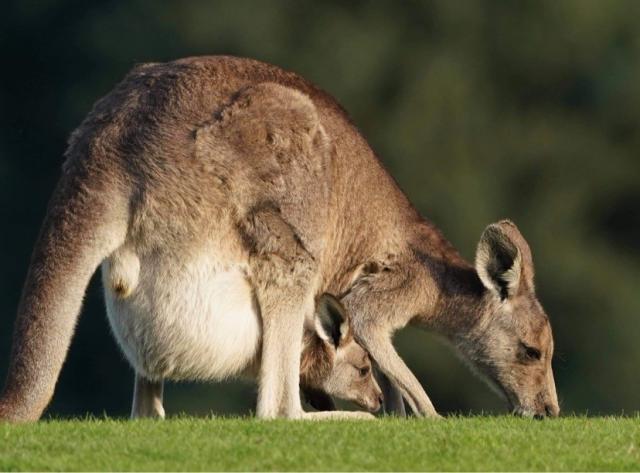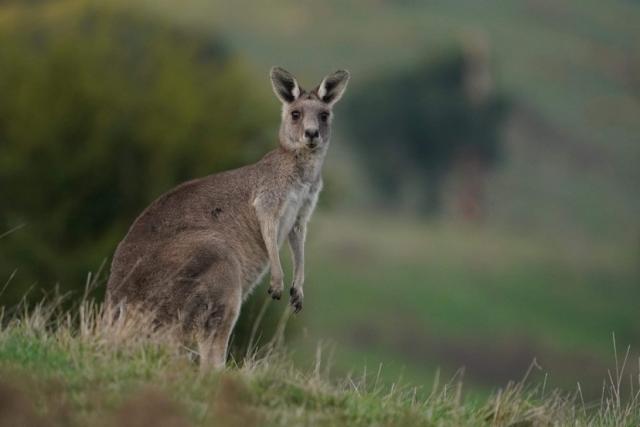
By Mikayla van Loon
The Victorian government has released the 2023 kangaroo harvesting quota report seeing a near 30 per cent increase in the total number of kangaroos able to be culled this year.
In the central district, including the Yarra Ranges, the total take of kangaroos allowed, under both the kangaroo harvesting (KHP) and the authority to control wildlife (ATCW) programs, is 82,050, an increase from 65,050.
This 26 per cent increase in the central district is inline with the 27 per cent increase overall across the state, which will see the total number of eastern and western grey kangaroos harvested raised to 236,350 from 185,850.
The Arthur Rylah Institute for Environmental Research conducted an aerial survey of kangaroo populations on behalf of the Department of Environment, Land, Water, and Planning (DELWP) during September and October last year within the seven harvest zones.
Releasing the report just before the turn of the new year on 28 December, it indicates an estimated abundance of grey kangaroos in non-forested areas to be 24 per cent higher than the 2020 count.
“The estimated total abundance of grey kangaroos within the seven harvest management zones was 2,363,850,” the report reads.
“The annual total recommended take for 2023 was set at 10 per cent of the estimated abundance, separately for each harvest zone.”
This has left local environmentalist groups and kangaroo activists devastated by the increase in the KHP and ATCW permits.
Victorian Kangaroo Alliance president Alyssa Wormald said she was appalled but not surprised the report was released over the New Year period while wildlife volunteers were taking a break but was even more upset by the quotas.
“Not only are the massive quotas horrific and heartbreaking, they are based on population numbers that are utterly fanciful and take no account of the mass mortality kangaroos suffered during the 2022 floods. The floods don’t even rate a mention,” she said.
“The claim that kangaroo numbers are increasing is completely incongruous with reports we receive from across the state where in many places kangaroo numbers have dwindled since the commercialisation of kangaroo slaughter in Victoria.”
This sentiment was reflected by newly elected Animal Justice Party MP for Northern Victoria Georgie Purcell.
“I’ll always be opposed to killing kangaroos, whether it be one or 100,000 — but this decision is a special kind of a betrayal to our state’s native animals so soon after flooding where populations drowned, starved or became displaced and hit by cars,” she said on social media.
DELWP, now known as the Department of Energy, Environment and Climate Action (DEECA), said the overall population has increased by 452,300 to approximately 2.3 million and there was no evidence to suggest flooding has impacted the population greatly.
“The maximum kangaroo harvest figure has increased for 2023 reflecting a significant increase in the estimated kangaroo population. The population figure is a conservative estimate of the total kangaroo population as heavily forested areas of Victoria weren’t included in the survey,” a Victorian government spokesperson said.
“The survey is undertaken in a scientifically rigorous manner – while scientists from the Arthur Rylah Institute acknowledged the localised impacts of flooding on wildlife, there is no evidence of significant impacts on the statewide kangaroo population.”
Local Aboriginal Elder Aunty Janet Turpie-Johnstone, who sits on the board of the Mullum Mullum Indigenous Gathering Place, is a lecturer in Aboriginal Art and Culture and who has conducted research into human relationships to Country, condemns the “indiscriminate slaughter” of sacred totem animals deeply linked to Aboriginal culture.
“As an Aboriginal Elder, plus researcher/academic, I totally abhor the way ongoing invasive colonists have taken this Country and her creatures and absolutely destroyed the very spirit of this land and harmed our Kin the Kangaroos,” she said.
According to DEECA, the KHP quota has been designed in a way so it can be adjusted throughout the year if needed, as well as the potential for harvest zones to be closed off if deemed necessary.
“DEECA will continue to monitor levels of kangaroo control throughout 2023 and will make changes to the Kangaroo Harvesting Program quota if necessary,” the spokesperson said.
The report notes that in most other states quotas of at least 15 per cent of the estimated abundance is set, with New South Wales just one to have this percentage of takings.







